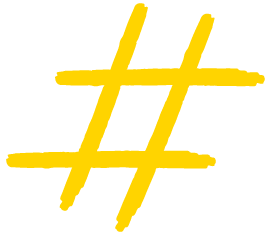Social Media for Social Change
Social media platforms have long been a place for like-minded people to build online communities. These platforms give users the opportunity to share and discuss their views in an open forum.
The spectrum of content shared on social media that has broadened over time has given rise to a new opportunity to share news of social injustices and call agreeing users to unite in the face of inequality. Social media platforms can educate and inspire people to make positive changes in the world.

Wrongdoings can be captured on a mobile phone and uploaded straight to social media for the world to see in seconds, which means holding people accountable has become easier than ever.
For most people, social media is a part of their everyday lives, so when deciding what social media platform you would like to use for your advocacy campaign, have a think about what platforms you are most comfortable on and use often. If you are on Instagram every day but never use Facebook, Instagram would be the obvious choice for rallying a community of like-minded people. However, when you’re wanting to connect with people in power (politicians, power holders, decision-makers) you may be able to reach them easier on Twitter or LinkedIn.
Some key things to consider when campaigning online:
1. TAG

Ensure that you’re tagging politicians in the right way—have you got the Prime Ministers’ correct Twitter handle or have you tagged a parody account?
2. HASHTAG

Make sure your hashtag is relevant, searchable, is using Camel Case
(Capital letters for each new word) for accessibility and has no spelling mistakes otherwise it will not be effective e.g. #EndRapeOnCampus #EmdRapeOnCampis.
3. GRAPHICS

Bold graphics, powerful images, memorable slogans and short videos can make a significant impact when campaigning online. Do everything you can to grab people’s attention and make them want to share your message. Online graphic design tools like Canva can make your campaign stand out.
Blogging
Set up your own blog or publish articles to educate your community and the general public on platforms like Medium. These platforms are designed to be user-friendly with WYSIWYG (What you see is what you get) text editors that don’t require you to know any coding!
If you have the time and resources we also recommend building your own website. Here are some build-your-own website options: WordPress, Squarespace, Wix, Weebly.
After building your website you might like to set up a regular e-newsletter for your community. Mailchimp is a great tool for this.
Organising Online
Our Cyber Feminists (CBF) make diverse feminist voices stronger by engaging in collective online advocacy. The CBF works like an online flash mob, mobilising at critical Advocacy Activation Points (AAPs) to amplify our advocacy and awareness raising priorities.
The CBF provides members with opportunities to advocate on key issues relating to gender equality. Your role as a CBF member will include sharing social media content at critical AAPs, fostering a safe and supportive online community and informing and
creating advocacy content for the CBF.
Online advocacy is an integral part of mobilising today. We can build communities and spread messages quicker than ever, and in times when we can’t physically be together, the internet is what keeps us connected. WEDO and WECF, two global women’s advocacy organisations have developed an excellent resource on organising online which covers everything from virtual meetings to accessibility and digital safety. If you would like to learn more about staying safe online, and what support is available in Australia, check out the eSafety Commissioner’s website.
This article is from our Y Advocacy Toolkit, a collection of practical tips and advice navigating advocacy in Australia will help you to identify policy areas of particular interest to you, and who you can talk to about creating change. Want to get more involved in advocacy but don’t know where to start? Why not join our Cyber Feminists (CBF)?




